2. Health Insurance Review & Assessment Service. A Study on the Development of Readmission Classification Model and Standards. Wonju: Health Insurance Review & Assessment Service;2016.
3. Yoo HW, Kim MG, Oh DN, Hwang JH, Lee KS. Factors associated with functional decline in older adults after discharge from an acute-care hospital. Asian Nurs Res (Korean Soc Nurs Sci). 2019; 13(3):192–199. PMID:
31146026.

4. Kahlon S, Pederson J, Majumdar SR, Belga S, Lau D, Fradette M, et al. Association between frailty and 30-day outcomes after discharge from hospital. CMAJ. 2015; 187(11):799–804. PMID:
26009583.

5. Holm SE, Mu K. Discharge planning for the elderly in acute care: the perceptions of experienced occupational therapists. Phys Occup Ther Geriatr. 2012; 30(3):214–228.

6. Coleman EA, Boult C. American Geriatrics Society Health Care Systems Committee. Improving the quality of transitional care for persons with complex care needs. J Am Geriatr Soc. 2003; 51(4):556–557. PMID:
12657079.

9. Pardessus V, Puisieux F, Di Pompeo C, Gaudefroy C, Thevenon A, Dewailly P. Benefits of home visits for falls and autonomy in the elderly: a randomized trial study. Am J Phys Med Rehabil. 2002; 81(4):247–252. PMID:
11953541.
10. Mora K, Dorrejo XM, Carreon KM, Butt S. Nurse practitioner-led transitional care interventions: An integrative review. J Am Assoc Nurse Pract. 2017; 29(12):773–790. PMID:
28845555.

11. Bouman A, van Rossum E, Ambergen T, Kempen G, Knipschild P. Effects of a home visiting program for older people with poor health status: a randomized, clinical trial in The Netherlands. J Am Geriatr Soc. 2008; 56(3):397–404. PMID:
18179482.

12. Bouman A, van Rossum E, Nelemans P, Kempen GI, Knipschild P. Effects of intensive home visiting programs for older people with poor health status: a systematic review. BMC Health Serv Res. 2008; 8(1):74. PMID:
18387184.

13. Pearson M, Hemsley A, Blackwell R, Pegg L, Custerson L. Improving Hospital at Home for frail older people: insights from a quality improvement project to achieve change across regional health and social care sectors. BMC Health Serv Res. 2017; 17(1):387. PMID:
28583180.

14. Kim YS, Lee J, Moon Y, Kim HJ, Shin J, Park JM, et al. Development of a senior-specific, citizen-oriented healthcare service system in South Korea based on the Canadian 48/6 model of care. BMC Geriatr. 2020; 20(1):32. PMID:
32005155.

15. Shon C, Lee S, Hwang J. Understanding factors associated with unmet need for outreach community health service among older adults in Seoul. J Korea Gerontol Soc. 2019; 39(2):213–229.

16. Shin J, Han SH, Choi J, Kim YS, Lee J. Importance of geriatric syndrome screening within 48 hours of hospitalization for identifying readmission risk: a retrospective study in an acute-care hospital. Ann Geriatr Med Res. 2020; 24(2):83–90. PMID:
32743328.

17. Lee Y, Lee HH, Uhm KE, Jung HJ, Kim YS, Shin J, et al. Early identification of risk factors for mobility decline among hospitalized older patients. Am J Phys Med Rehabil. 2019; 98(8):699–705. PMID:
31318751.

18. Dharmarajan K, Han L, Gahbauer EA, Leo-Summers LS, Gill TM. Disability and recovery after hospitalization for medical illness among community-living older persons: a prospective cohort study. J Am Geriatr Soc. 2020; 68(3):486–495. PMID:
32083319.

19. Zisberg A, Shadmi E, Sinoff G, Gur-Yaish N, Srulovici E, Admi H. Low mobility during hospitalization and functional decline in older adults. J Am Geriatr Soc. 2011; 59(2):266–273. PMID:
21314647.

20. Brown CJ, Redden DT, Flood KL, Allman RM. The underrecognized epidemic of low mobility during hospitalization of older adults. J Am Geriatr Soc. 2009; 57(9):1660–1665. PMID:
19682121.

21. Runganga M, Peel NM, Hubbard RE. Multiple medication use in older patients in post-acute transitional care: a prospective cohort study. Clin Interv Aging. 2014; 9:1453–1462. PMID:
25214773.
22. Devine KA, Viola AS, Coups EJ, Wu YP. Digital health interventions for adolescent and young adult cancer survivors. JCO Clin Cancer Inform. 2018; 2:1–15.

23. Jayakody A, Bryant J, Carey M, Hobden B, Dodd N, Sanson-Fisher R. Effectiveness of interventions utilising telephone follow up in reducing hospital readmission within 30 days for individuals with chronic disease: a systematic review. BMC Health Serv Res. 2016; 16(1):403. PMID:
27538884.

24. Allen J, Hutchinson AM, Brown R, Livingston PM. Quality care outcomes following transitional care interventions for older people from hospital to home: a systematic review. BMC Health Serv Res. 2014; 14(1):346. PMID:
25128468.

25. Preen DB, Bailey BE, Wright A, Kendall P, Phillips M, Hung J, et al. Effects of a multidisciplinary, post-discharge continuance of care intervention on quality of life, discharge satisfaction, and hospital length of stay: a randomized controlled trial. Int J Qual Health Care. 2005; 17(1):43–51. PMID:
15668310.

26. Mitsutake S, Ishizaki T, Tsuchiya-Ito R, Uda K, Teramoto C, Shimizu S, et al. Associations of hospital discharge services with potentially avoidable readmissions within 30 days among older adults after rehabilitation in acute care hospitals in Tokyo, Japan. Arch Phys Med Rehabil. 2020; 101(5):832–840. PMID:
31917197.

27. Wang YC, Chou MY, Liang CK, Peng LN, Chen LK, Loh CH. Post-acute care as a key component in a healthcare system for older adults. Ann Geriatr Med Res. 2019; 23(2):54–62. PMID:
32743289.

28. Braet A, Weltens C, Sermeus W. Effectiveness of discharge interventions from hospital to home on hospital readmissions: a systematic review. JBI Database Syst Rev Implement Reports. 2016; 14(2):106–173.

29. Low LL, Vasanwala FF, Ng LB, Chen C, Lee KH, Tan SY. Effectiveness of a transitional home care program in reducing acute hospital utilization: a quasi-experimental study. BMC Health Serv Res. 2015; 15(1):100. PMID:
25888830.

30. Oikonomou E, Chatburn E, Higham H, Murray J, Lawton R, Vincent C. Developing a measure to assess the quality of care transitions for older people. BMC Health Serv Res. 2019; 19(1):505. PMID:
31324171.

31. Wong FK, Chau J, So C, Tam SK, McGhee S. Cost-effectiveness of a health-social partnership transitional program for post-discharge medical patients. BMC Health Serv Res. 2012; 12(1):479. PMID:
23259498.

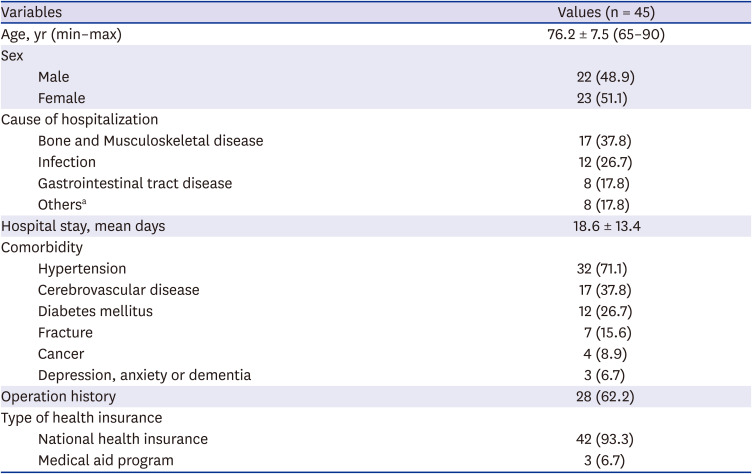
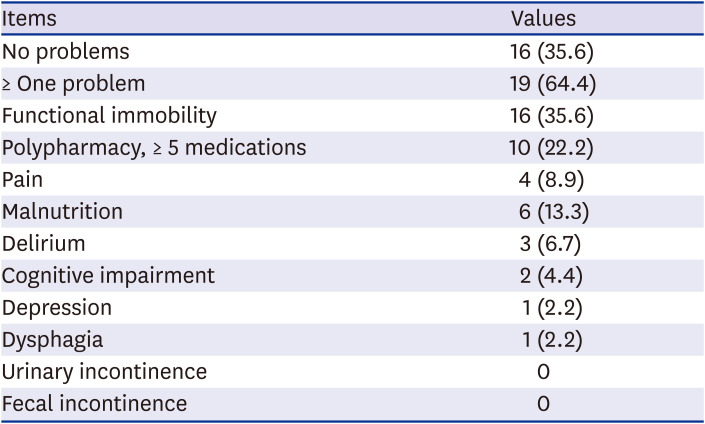
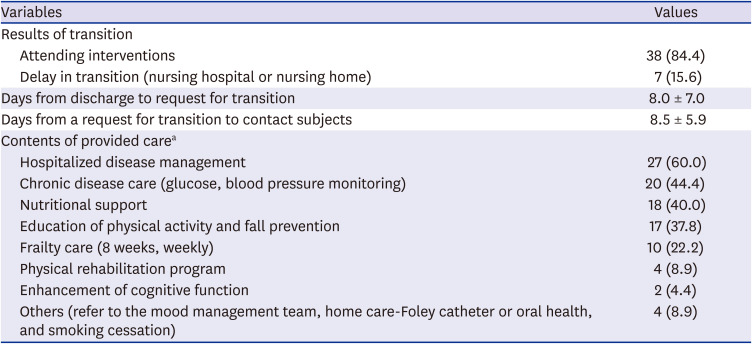




 PDF
PDF Citation
Citation Print
Print



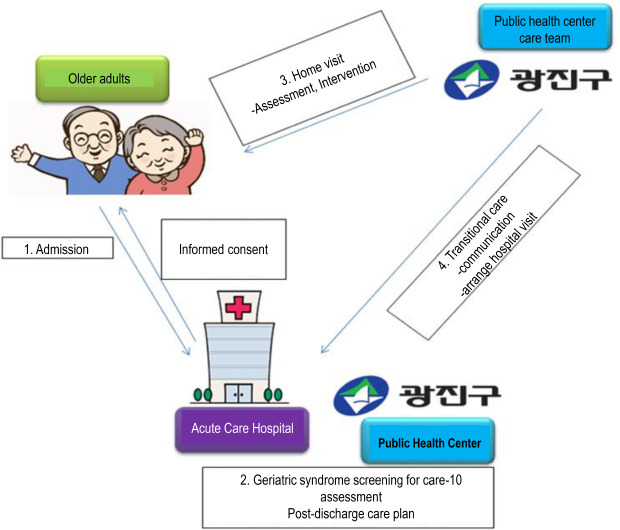
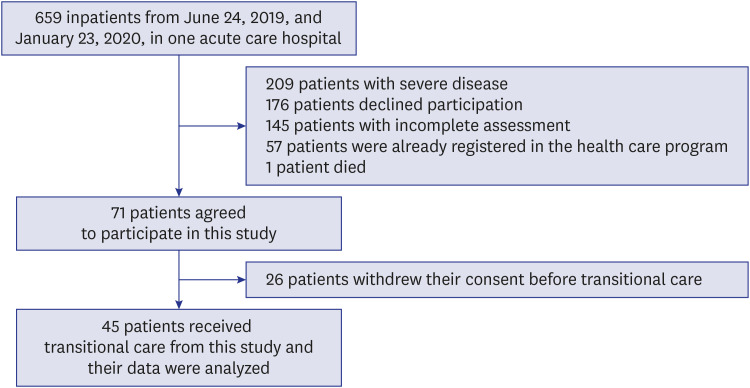
 XML Download
XML Download